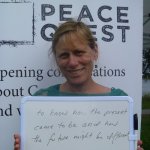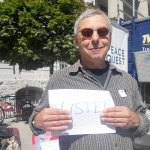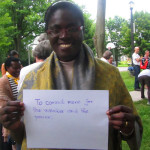I just can’t figure out why our boys had to go through that
 We are, explains Karen Armstrong in her short book The Short History of Myth, “myth-making creatures.”
We are, explains Karen Armstrong in her short book The Short History of Myth, “myth-making creatures.”
Myths and stories influence the way we think, the beliefs we hold. An important English Canadian myth at the time of World War I was that Canadians needed to spring to the defence of the Mother Country. Since then, the history of the war has often been dressed up as a nation-building experience rather than a mass atrocity.
The authorities urged the sons of Canada to fulfill their filial duty by enlisting in the war to end all wars…
Canada’s mothers, the government insisted, should act as recruitment officers for this noble cause.
By 1919 the Canadian government had ordered that a new medal, the silver Memorial Cross, be awarded to bereaved mothers whose sons had perished in the trenches. By the 1930s the stories of maternal loss had been repeated often enough that one bereaved mother, Mrs. Charlotte Susan Wood, was chosen as Canada’s first official Silver Cross Mother. Mrs. Wood was a Winnipeg laundry worker whose son Percy had perished at Vimy Ridge before he turned eighteen, one of her five sons killed in World War I.
She was introduced to King Edward VIII at the 1936 Vimy Ridge Pilgrimage.
“Oh! Sir, I have just been looking at the trenches,” she said to the monarch. “And I just can’t figure out why our boys had to go through that.”
Mrs. Wood, made famous by the mythmakers of the day, apparently had her doubts about the glory of it all.
“Please God, Mrs. Wood,” replied King Edward, “It shall never happen again.”
Canada’s famous war mother died three years later, weeks after the start of another catastrophic war. She was buried in an unmarked grave in Winnipeg’s Brookside Cemetery. Though a new gravestone was erected over sixty years later, Mrs. Wood’s story has for the most part faded into the mists of history.
“Will the stories of her sacrifice be resurrected and polished up in some future time of national crisis?” asked Ottawa historian Suzanne Evens ninety years after the Battle of Vimy Ridge. “If history is a struggle between remembering and forgetting, then what is remembered is a battleground in itself…”
~ Jamie Swift, January 2013









